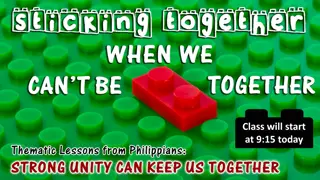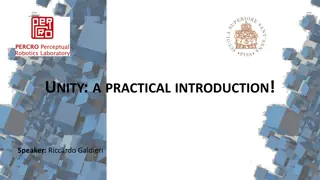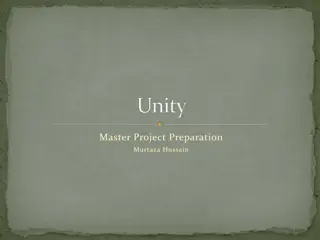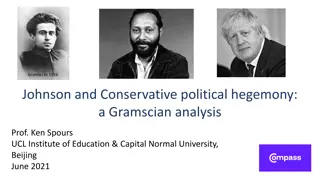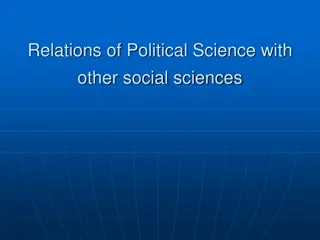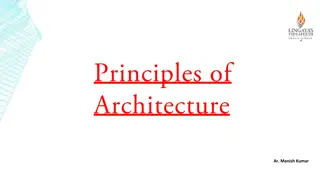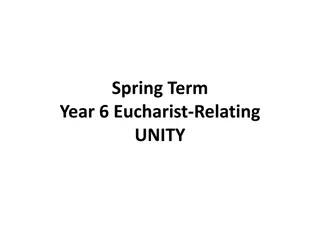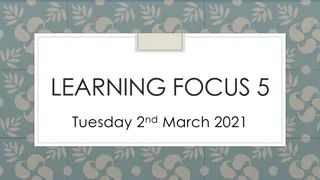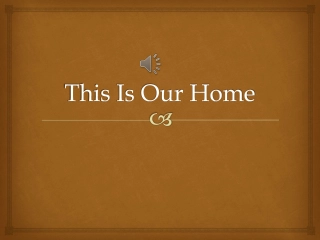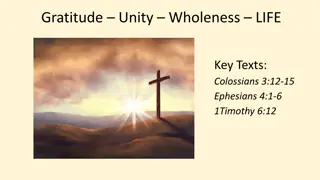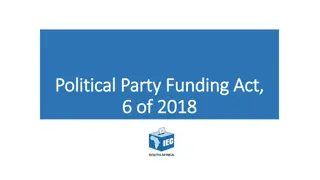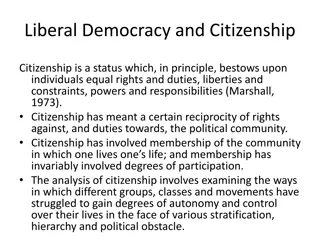Understanding Differences vs. Embracing Unity: Navigating a Political World
Explore the nuances of socio-political topics, establish ground rules for respectful conversations, delve into economic issues, human rights, and more. Discover surface and deeper level differences that shape our values and learn to engage with discomfort for inclusivity.
Download Presentation

Please find below an Image/Link to download the presentation.
The content on the website is provided AS IS for your information and personal use only. It may not be sold, licensed, or shared on other websites without obtaining consent from the author. Download presentation by click this link. If you encounter any issues during the download, it is possible that the publisher has removed the file from their server.
E N D
Presentation Transcript
Differences vs. Divisiveness A Guide to Understanding and Discussing your A Guide to Understanding and Discussing your Values in a Political World Values in a Political World
Ground Rules Examples: Examples: Listening to understand Listening to understand Giving your full attention Giving your full attention (phones put away!) (phones put away!)
Our Values and Social Issues Economic Issues: Economic Issues: employment/unemployment, employment/unemployment, minimum wage minimum wage Education: Education: access to, funding for, loan access to, funding for, loan forgiveness, education funding forgiveness, education funding Housing: Housing: homelessness, access to affordable homelessness, access to affordable housing housing Human Rights: Human Rights: equitable treatment regardless equitable treatment regardless of identities (race, gender, disability, etc.) of identities (race, gender, disability, etc.) Justice System: Justice System: federal prison system, bail/bond federal prison system, bail/bond process process Public Health: Public Health: access to/funding for healthcare access to/funding for healthcare
Culmination of Difference different hobbies, majors/area of study, different hobbies, majors/area of study, friend groups, fashion style choices, friend groups, fashion style choices, diet etc. diet etc. Surface Level Differences: Surface Level Differences: Deeper Level Differences: Deeper Level Differences: cultural/ethnic background, religion, cultural/ethnic background, religion, sexual orientation, gender, finances, sexual orientation, gender, finances, partisanship, etc. partisanship, etc.
Culmination of Difference What values do you hold that are What values do you hold that are uncompromising? uncompromising? Where do you draw the line when it Where do you draw the line when it comes to these conversations when comes to these conversations when they start to feel divisive? they start to feel divisive?
Leaning into Discomfort about diversity and inclusivity because they about diversity and inclusivity because they fear looking wrong, saying something wrong, fear looking wrong, saying something wrong, or being wrong. Choosing our own comfort or being wrong. Choosing our own comfort over hard conversations is the epitome of over hard conversations is the epitome of privilege, and it corrodes trust and moves us privilege, and it corrodes trust and moves us away from meaningful and lasting change. away from meaningful and lasting change. - - Bren Brown, Bren Brown, Dare to Lead People are opting out of vital conversations People are opting out of vital conversations Dare to Lead
Leaning into Discomfort If we want people to fully show up, to bring If we want people to fully show up, to bring their whole selves including their unarmored, their whole selves including their unarmored, whole hearts whole hearts so that we can innovate, solve so that we can innovate, solve problems, and serve people problems, and serve people vigilant about creating a culture in which vigilant about creating a culture in which people feel safe, seen, heard, and respected. people feel safe, seen, heard, and respected. - - Bren Brown, Bren Brown, Dare to Lead we have to be we have to be Dare to Lead
Leaning into Discomfort If we want people to fully vital conversations about vital conversations about diversity and inclusivity diversity and inclusivity because they fear looking because they fear looking wrong, saying something wrong, saying something wrong, or being wrong. wrong, or being wrong. Choosing our own comfort Choosing our own comfort over hard conversations is over hard conversations is the epitome of privilege, the epitome of privilege, and it corrodes trust and and it corrodes trust and moves us away from moves us away from meaningful and lasting meaningful and lasting change. change. - - Bren Brown, Bren Brown, Dare to Lead Dare to Lead People are opting out of People are opting out of If we want people to fully show up, to bring their show up, to bring their whole selves including their whole selves including their unarmored, whole hearts unarmored, whole hearts so that we can innovate, so that we can innovate, solve problems, and serve solve problems, and serve people people we have to be we have to be vigilant about creating a vigilant about creating a culture in which people feel culture in which people feel safe, seen, heard, and safe, seen, heard, and respected. respected. - - Bren Brown, Bren Brown, Dare to Lead Dare to Lead
Leaning into Discomfort to leaning into discomfort? to leaning into discomfort? What are challenges when it comes What are challenges when it comes What are the benefits you see of What are the benefits you see of leaning into discomfort? leaning into discomfort? What are some strategies you can What are some strategies you can think of to lean into discomfort? think of to lean into discomfort?
Where We Go from Here Recall a time that you might have felt Recall a time that you might have felt uncomfortable or unsure in a uncomfortable or unsure in a conversation about beliefs, policies, or conversation about beliefs, policies, or politics. politics.
Where We Go from Here How could that conversation have How could that conversation have looked differently? looked differently? How could you have used the How could you have used the strategy you identified a few strategy you identified a few minutes ago to change the minutes ago to change the outcome of that interaction? outcome of that interaction?


